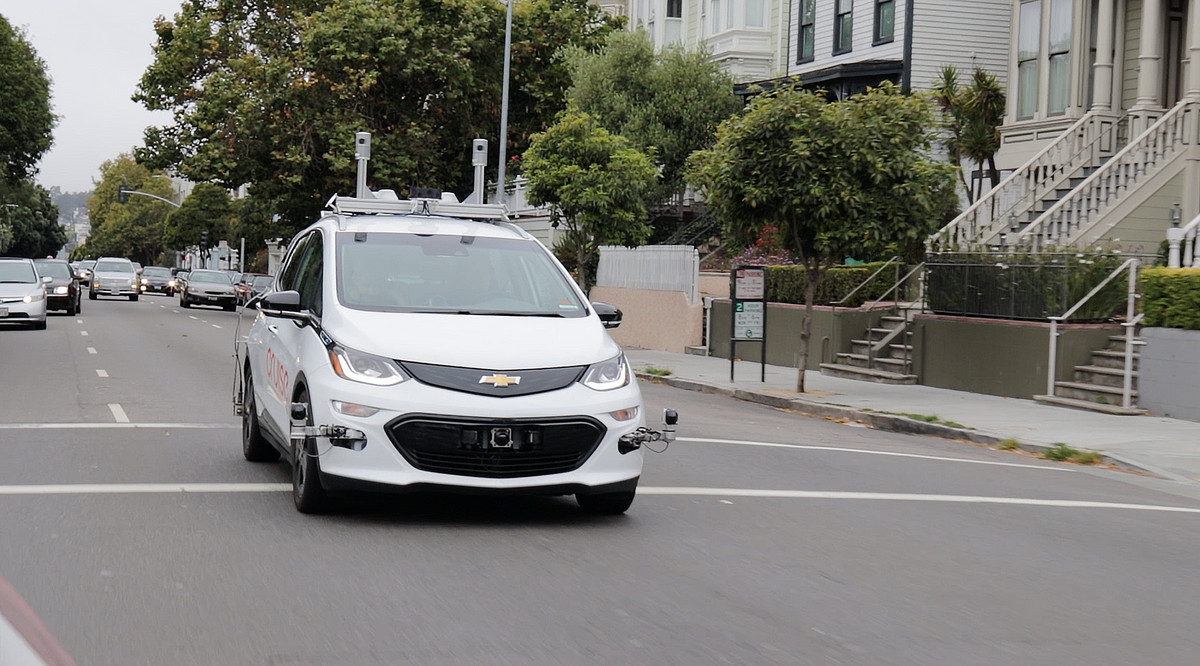Cruise Automation, a self-driving unit of General Motors, is revealing new details about its training program for its human test drivers. Drivers undergo a month-long training session as well as in-car audits, incident response drills, and exams. Moreover, testers who sit in the driver’s seat are instructed to keep their hands on the steering wheel at all times — even when the vehicle is driving itself.
The details are contained in an appendix to GM’s 33-page safety report that was submitted to federal regulators, which the auto giant published at the start of the year. It comes at a time of heightened scrutiny of the drivers who are charged with seizing control of autonomous vehicles during dangerous incidents. In March, a self-driving Uber vehicle struck and killed a pedestrian in Arizona even though a safety driver was seated behind the steering wheel.
The details of Cruise’s training program are important because the company is expected to dramatically increase the number of autonomous vehicles it deploys this year. Cruise is newly flush with cash; it just received a massive $2.26 billion investment from Japan’s Softbank. And GM plans to launch a commercial robot-taxi service in 2019, around the same time it plans to put a fully autonomous vehicle with no steering wheel or pedals into production.
GM purchased Cruise for $1 billion in 2016 to jump-start its self-driving efforts. Since then, the company has been testing its fleet of self-driving Chevy Bolt vehicles in San Francisco and Arizona. Cruise has one of the largest fleets of autonomous test vehicles in the Bay Area, with over 100 cars and permits for almost 400 drivers in California.
In the document it published today, Cruise refers to its drivers as “autonomous vehicle testers,” or AVTs. Two AVTs are in each Cruise vehicle during public road tests at all times; one is there to monitor the driving from behind the steering wheel and the other is there to capture and record data. Almost every company operating self-driving vehicles on public roads uses two human testers — except Uber.
“We currently have two AVTs in each of our test vehicles,” Cruise states. “We will continue to have AVTs in our test vehicles until we achieve our safety requirements and are ready to deploy in driverless mode.”
Monitoring a self-driving car can be extremely boring, causing human testers to zone out and let their attention wander. This can increase the chance of preventable accidents — or, in Uber’s case, a fatal crash. Dash cam footage from inside the Uber car in Arizona showed the driver looking down in the moments before the crash.
/cdn.vox-cdn.com/uploads/chorus_asset/file/9014613/cruise_anywhere_car3.png)
In order to prevent this, Cruise mandates breaks during driving shifts, and restricts the number of hours that AVTs are kept on the road for testing. How many breaks and how many hours, the company’s document doesn’t specify. (A spokesperson declined to elaborate.)
“Once our trained AVT is in the driver’s seat and our self-driving vehicle is on the road, the AVT must be always ready to take control of the vehicle,” Cruise says in its report. “We design all other tasks so as not to divert the AVT’s attention from this primary responsibility. All other tasks must either (a) not interfere with the AVT’s ability to take over, or (b) be performed by someone or something else.”
Test drivers have extensive pre- and post-drive checklists. On-road data is collected automatically or by the support tester in the passenger seat. And the AVT in the driver’s seat may only dictate verbal observations and feedback to the support tester to minimize distraction.
Cruise’s test drivers undergo a month-long driver’s education course, which includes sessions in a classroom, at the car, in the car, on private roads, and then eventually on public roads. They are also subjected to regular audits to make sure they are keeping up with the rules of the road. Cruise requires that its AVTs are enrolled in a state DMV’s electronic pull notice program, which flags any driving violations.
California requires self-driving operators to report the number of disengagements, or the frequency at which human drivers were forced to take control of their driverless vehicles. Cruise says it uses these incidents to develop new training. “For example, if an AVT took over driving because of anticipated behavior by the self-driving system, we follow an escalation process.”
If a human driver cuts off a self-driving car that had the right-of-way, Cruise will analyze that incident and incorporate that data into a software update for its entire fleet. It may also lead to new training requirements for the AVTs. “Because the experience of our AVTs isn’t static, neither is our training,” Cruise says.
But the training program wasn’t always so rigorous. As early as last year, documents submitted to California’s Department of Motor Vehicles, and published by Financial Times, show that Cruise spent less time on training than Uber, which reported spending about three weeks training its drivers. Cruise told the DMV it put safety drivers through a “multi day” course. That stretched to a month starting in June 2017, the company said.
